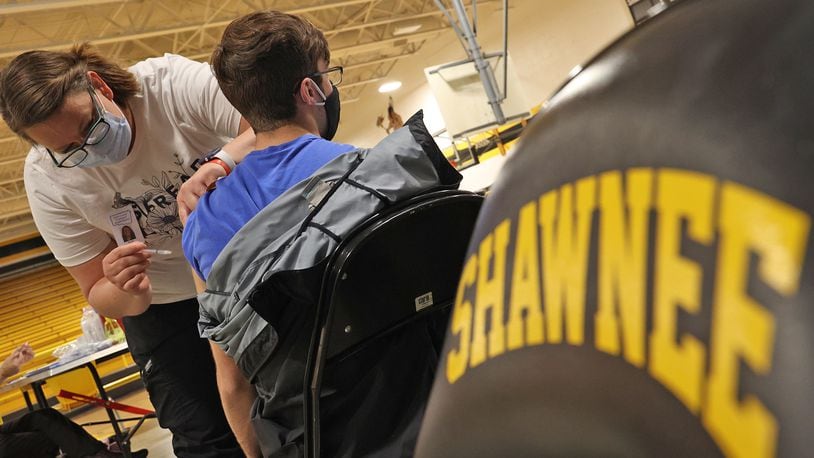He added there are already reports of children in the U.S. being infected with COVID-19 and RSV, or respiratory syncytial virus. Vanderhoff noted it isn’t uncommon for children to come down with two respiratory infections at once, and it isn’t clear if COVID could result in more severe cases of RSV at this time.
“I firmly believe that most parents of young children don’t want to find that out,” Vanderhoff said.
The Dayton region is among many across the country seeing a summer increase in RSV. Most infections typically start in to increase as temperatures drop, but this summer cases are unseasonably high.
In June the Centers for Disease Control and Prevention issued an advisory alerting doctors and caregivers about increase RSV rates in the South.
“Due to this increased activity, CDC encourages broader testing for RSV among patients presenting with acute respiratory illness who test negative for SARS-CoV-2, the virus that causes COVID-19,” the alert read. “RSV can be associated with severe disease in young children and older adults.”
Vanderhoff said the state is hearing from all of its children’s hospitals that they’re seeing an “unprecedented summer wave” of common respiratory viruses led by RSV.
“On top of that, they’re seeing some increase in the number of COVID-19 cases,” he said. “When you put it together, it creates almost a perfect storm of activity at a time when our children’s hospitals see a very light volume of respiratory illnesses.”
Dr. Patty Manning-Courtney, pediatrician and chief of staff at Cincinnati Children’s Hospital Medical Center, said COVID-19 patients are a minority of patients in children’s hospitals currently, but that number is on the rise. There are also children hospitalized for other serious reasons, such as cancer or transplants, who also test positive for COVID.
“You don’t want to have to deal with COVID when you’re also dealing with another serious illness in a child,” she said.
Dr. Michael Forbes, pediatric intensive care specialist at Akron Children’s Hospital, said that while most children are infected with RSV by the age of 2, babies born pre-term or with certain heard and lung conditions are particularly vulnerable to RSV.
“We know that from year-to-year, last year’s RSV does create some degree of background immunity for the next year,” he said.
Because there were fewer cases of RSV last year, some children don’t have that background immunity, Forbes said.
While there is no vaccine for RSV, parents can protect their children and themselves by wearing face masks, frequent hand washing and social distancing.
“At the rate that things are rising with kids between RSV and COVID, we have to do everything in our power right now to get through the next few weeks,” said Manning-Courtney. “That means getting vaccinated, wearing a mask in school and being more vigilant about social distancing.”
Symptoms of RSV in infants younger than 6 months include irritability, poor feeding, lethargy, and/or apnea with or without fever, according to the CDC. Older infants and young toddlers may have a runny nose or a decreased appetite may appear one to three days before cough, often followed by sneezing, fever, and sometimes wheezing.
Though hospitals in Ohio are not “pressed” with the number of patients they’re caring for, Vanderhoff said the state could get to that point. To avoid overwhelming hospitals, people should get vaccinated if they’re eligible or wear face masks, practice social distancing and wash their hands frequently.
Manning-Courtney added that as fall approaches and children return to school, children’s hospitals typically see an increase in mental health patients as well as respiratory viruses.
“We are sounding the alarm a little bit in advanced of that time period because if we follow the trajectory of some of our southern neighbors, we could be in a very dangerous position with regards to caring for the children of Ohio,” she said. “I don’t want to be an alarmist, but I also feel it’s my responsibility to share the trends that we’re seeing and to ask for help when we need it.”
